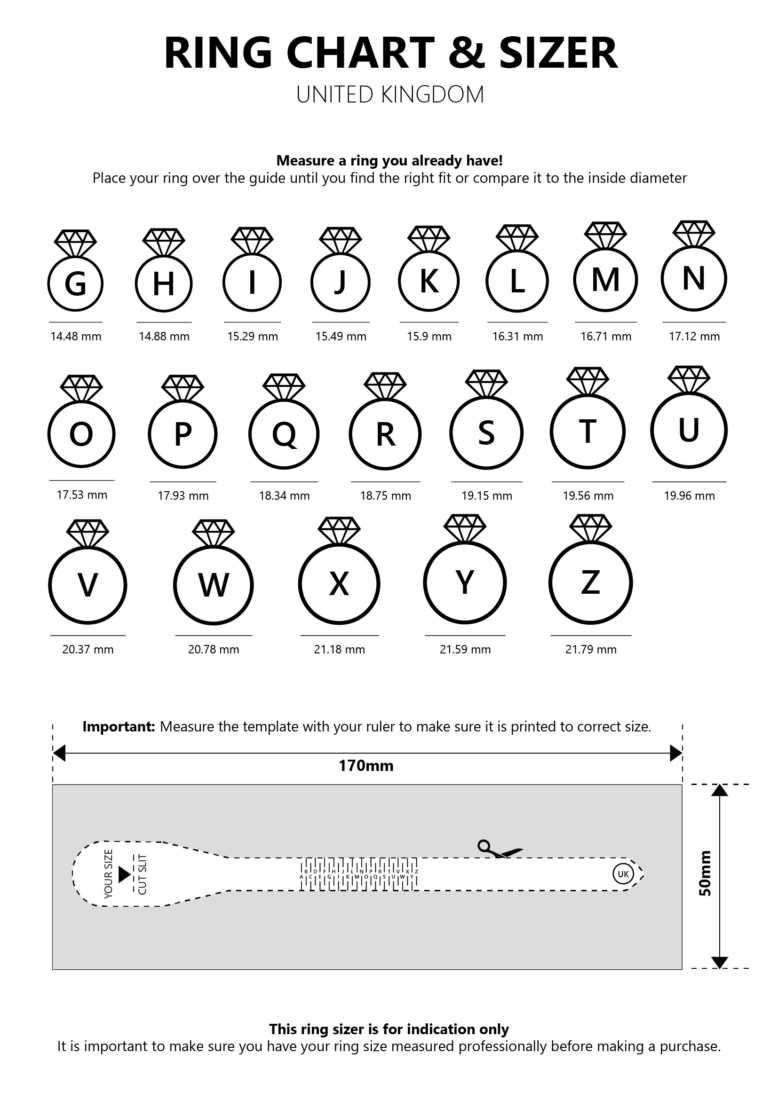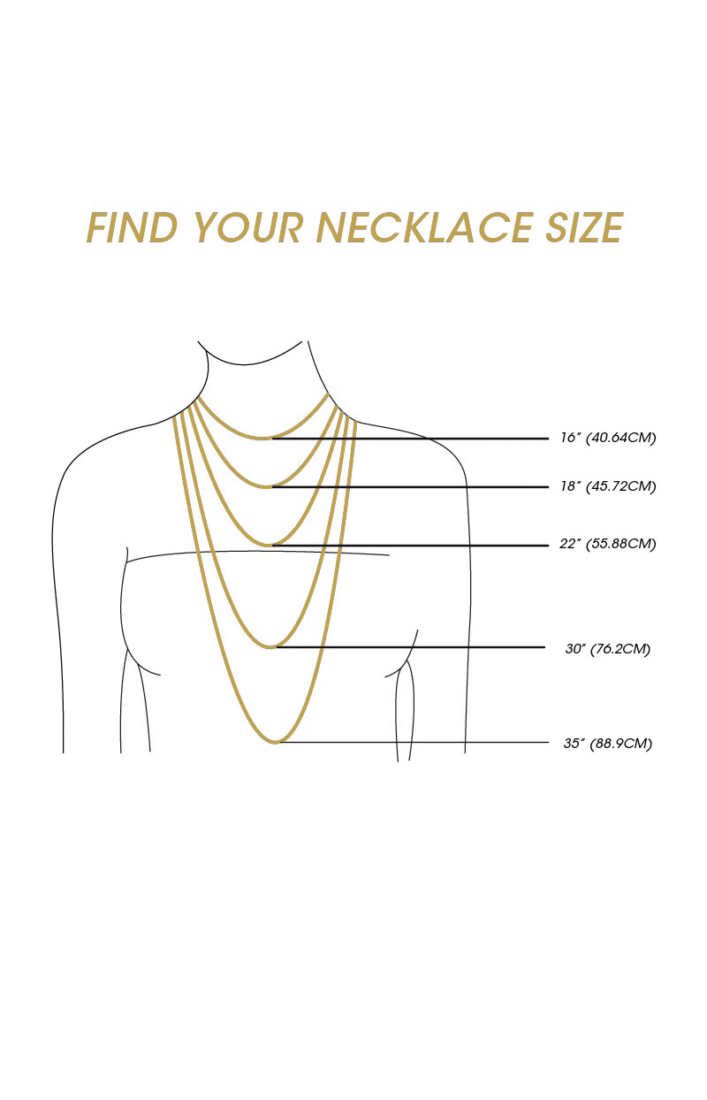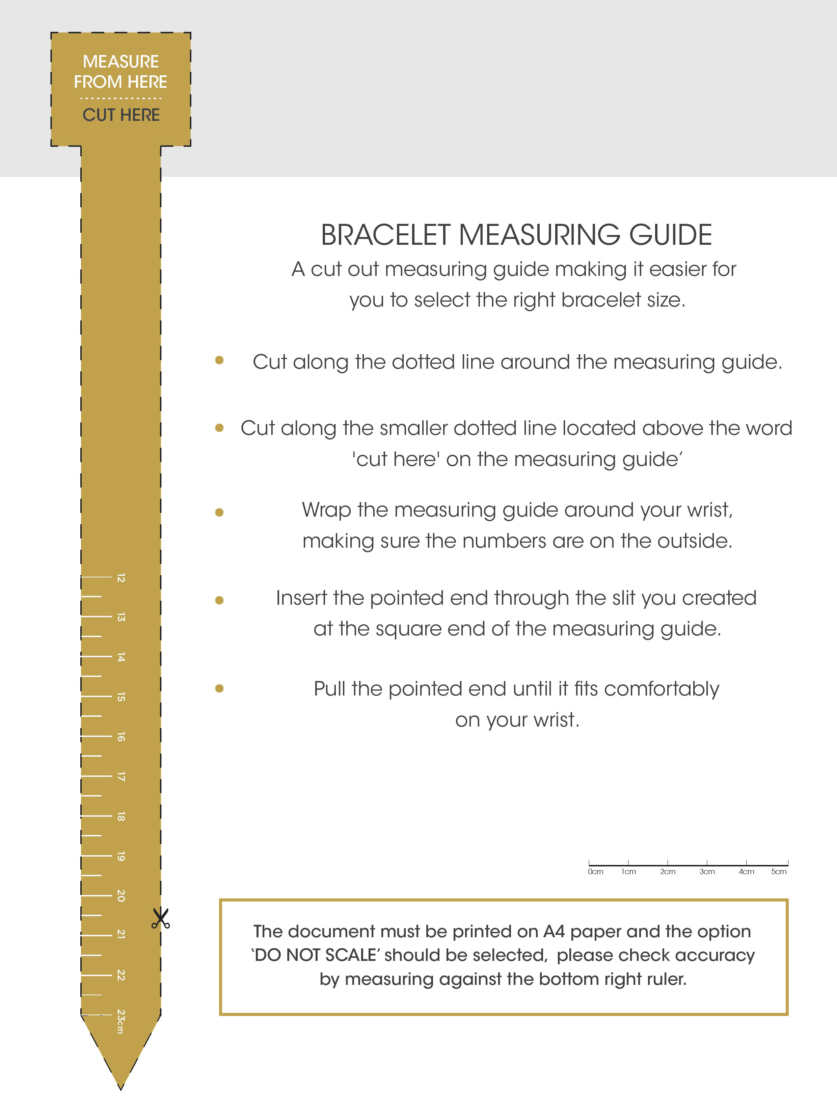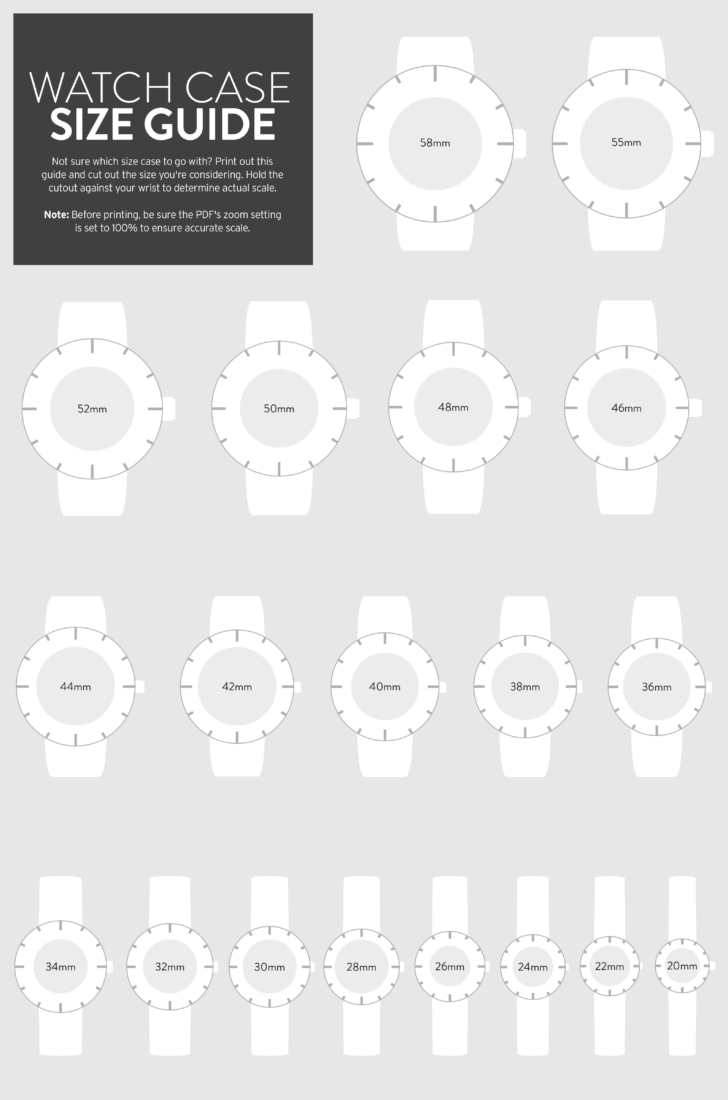Size Guides
Ring Sizes
Measuring your ring size accurately is crucial when purchasing rings, as it ensures a comfortable and secure fit. The UK and EU sizing standards for rings are similar and are usually measured in millimetres. To determine your ring size, you can use a ring sizing chart like the printable one on this page or a piece of string or paper. First, wrap the string or paper around the base of the finger where the ring will be worn, making sure it’s snug but not too tight. Then, mark the spot where the string or paper overlaps and measure the length in millimetres. Once you have this measurement, refer to a ring sizing chart that lists UK and EU sizes, such as the one provided on this page. Find your measurement on the chart and match it with the corresponding size. It’s important to note that finger size can fluctuate throughout the day due to temperature and activity, so it’s best to measure your finger at different times to get a more accurate average. By following these steps, you can confidently purchase rings that fit perfectly.
Necklace Length
Necklace length is an important factor to consider when choosing the right necklace for your outfit or body type. Necklaces come in various lengths, ranging from chokers to long ropes, and can complement different necklines and styles. The standard measurement for necklaces is inches, with centimeters in brackets for reference. Chokers typically measure between 14-16 inches (35-41 cm) and sit at the base of the neck, making them a great choice for off-shoulder or V-neck tops. Collar necklaces measure between 12-14 inches (30-35 cm) and sit snugly around the neck, adding a touch of elegance to high-neck or boat-neck tops. Princess necklaces measure between 16-18 inches (41-46 cm) and fall just below the collarbone, making them a versatile choice for most necklines. Matinee necklaces measure between 20-24 inches (50-61 cm) and fall just above the bust, complementing lower necklines and adding a touch of sophistication to business attire. Opera necklaces measure between 28-36 inches (71-91 cm) and can be worn as a long single strand or doubled up, making them a great choice for layering or adding drama to evening wear. By understanding the different necklace lengths and which styles suit them, you can easily choose the perfect necklace to complete your look.
Bracelet Length
Bracelet sizing is an important consideration when choosing the perfect bracelet for your wrist. An ill-fitting bracelet can be uncomfortable or even slip off, so it’s essential to measure your wrist accurately. A printable bracelet sizing guide can be an excellent tool for measuring your wrist. To use the guide, print it out and cut along the dotted line. Then, wrap the guide around your wrist, making sure it’s snug but not too tight, and mark the spot where the guide overlaps. Finally, measure the length in centimetres to determine your wrist size. It’s important to note that bracelet sizes can vary depending on the style and design, so it’s best to measure your wrist for each bracelet you plan to purchase. Most bracelet sizing guides list the standard sizes as small, medium, and large, but some may provide specific measurements in inches or centimetres. By using a bracelet sizing guide and understanding your wrist size, you can confidently purchase bracelets that fit comfortably and look stylish.
Watch Case Size Guide
The watch case size is another important factor to consider when choosing a watch. The watch case size is typically measured in millimeters (mm) and refers to the width of the watch case, which includes the bezel and excludes the crown. Watch case sizes can range from small to large and can affect the watch’s style, comfort, and functionality. To determine the right watch case size, measure the width of your wrist in millimeters and compare it with the watch case size. A watch case between 38-42mm is generally considered standard or medium size, while a smaller size would be considered more traditional or dressy, and a larger size would be considered more modern or sporty. It’s essential to consider your personal preference and the watch’s purpose when selecting a watch case size. For example, a smaller watch case may be more appropriate for formal occasions, while a larger watch case may be more suitable for outdoor or sports activities. By understanding watch case sizing and considering your personal style and needs, you can select a watch that fits comfortably and complements your style.




